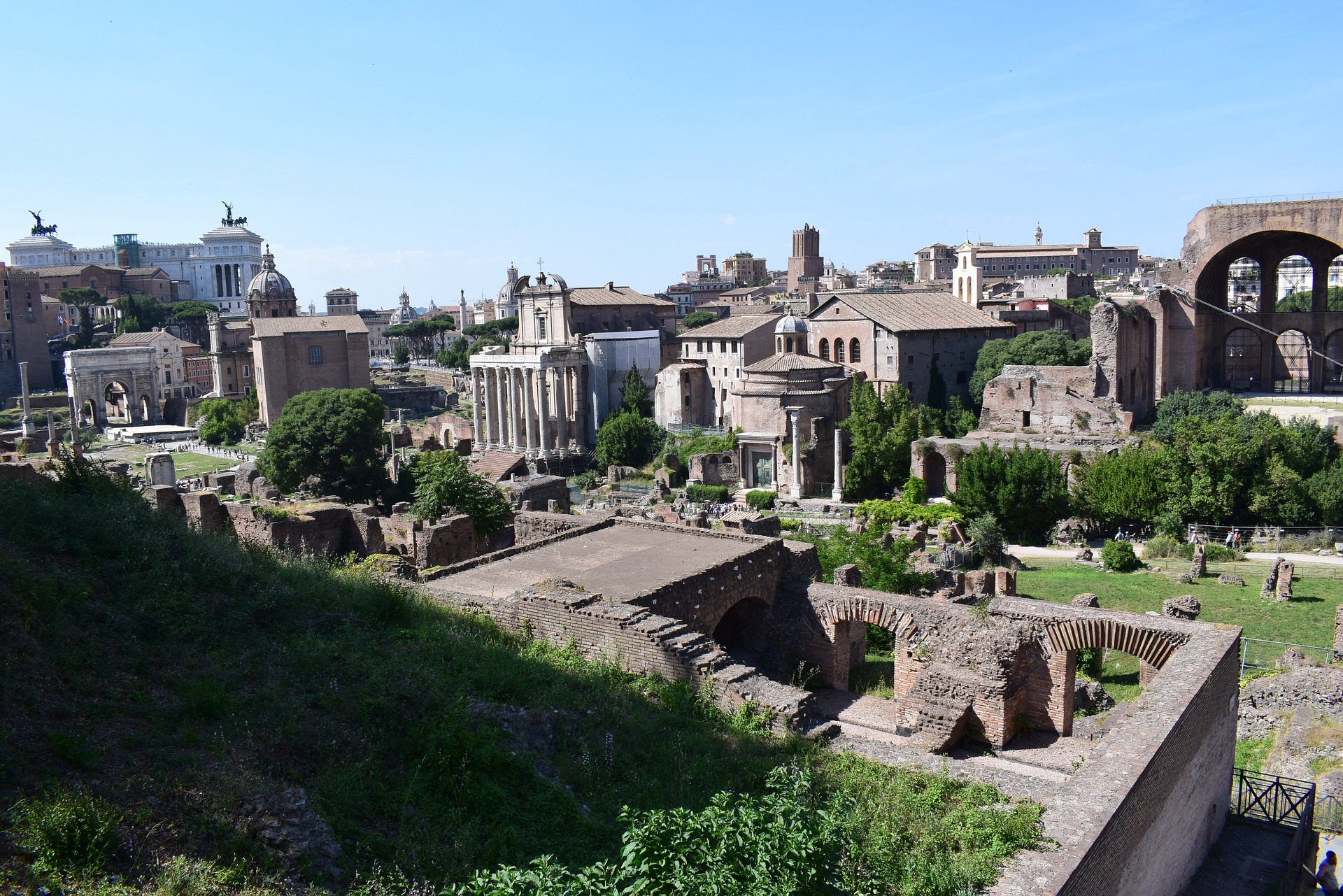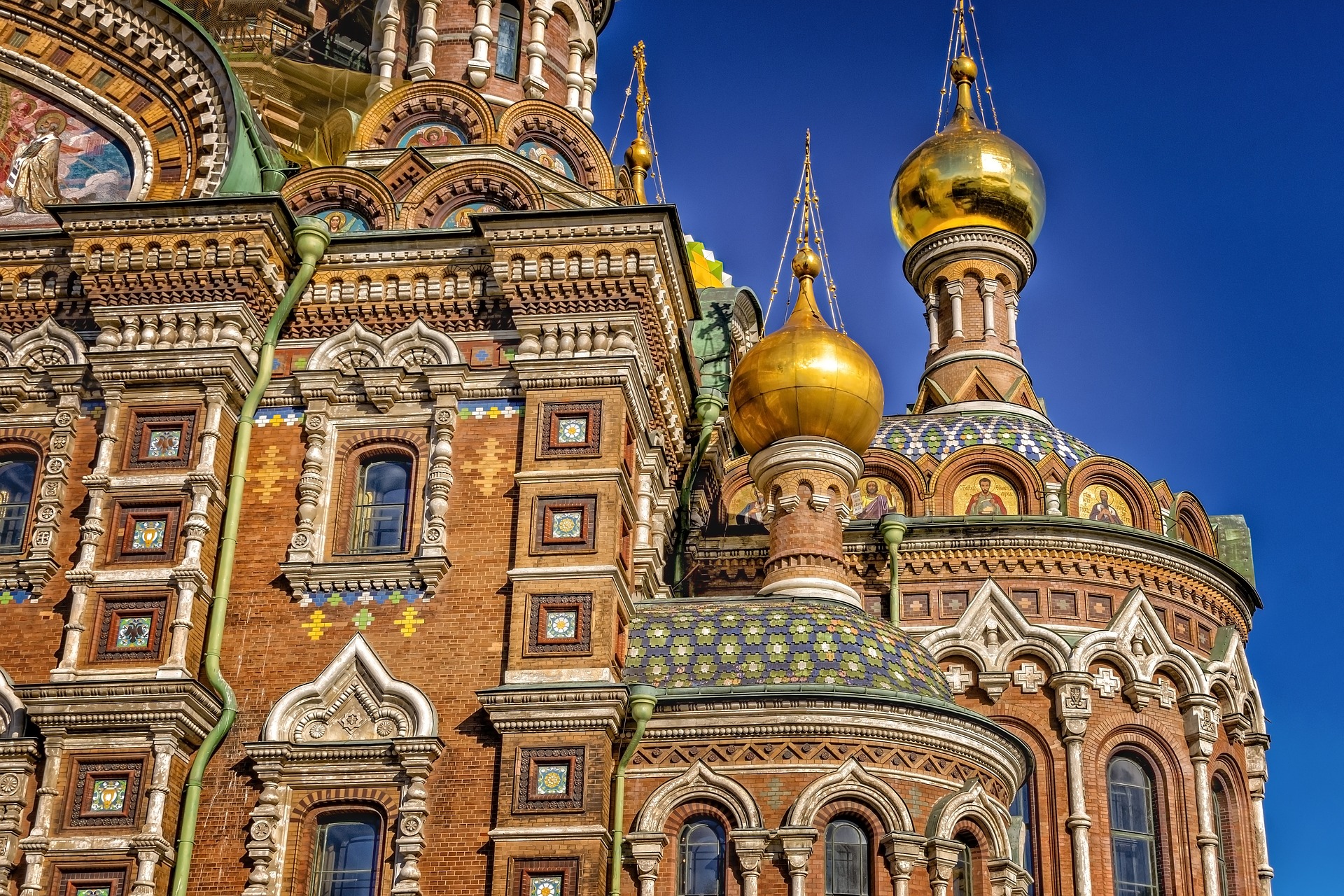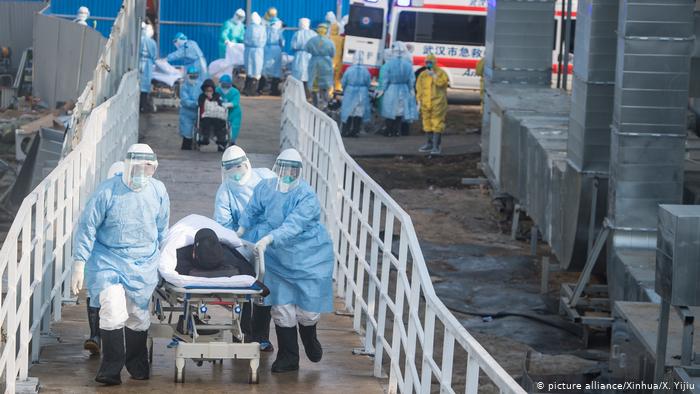
From Plague to Pandemic Covid-19: Not Just Men even Microbes Write History


Prof. Arunaditya Sahay
Dean (Research)
Professor of Strategic Management, BIMTECH (View Full Profile)


If viruses and bacteria had the ability to write and document, they would have written—The History of Man-Virus, Man-Bacteria Interactions. From Plague to Cholera, to Small Pox to Covid -19, history is witness to the incessant war between the two. Presenting snapshots from the battlefields that move from streets to hospital clinics to “quaranta”, humans are in no hurry to declare themselves as victors. For, it is not clear how the next interaction will be.
Plague
Pelusium is a place near the modern-day Port Said, in north-eastern Egypt. This place is known where the first pandemic broke out in the year 541. The pandemic, then, was named “pestilence” which spread towards Alexandria in the west and towards Palestine in the east. Fever was the symptom of the pestilence observed in early stage. According to the historian Procopius, the intensity of fever was so mild that it did not “afford any suspicion of danger.” The victims, however, developed symptoms like lumps, or buboes, mainly under their arms and in their groin within a few days. The suffering was terrible; some victims went into a coma while some others went into violent delirium and yet some others vomited blood.
This plague struck Constantinople (today’s Istanbul), the capital of the Eastern Roman Empire, in early 542. The number of death was very large; families could not afford to bury them, thus, abandoned their body. Justinian, the Eastern Roman Emperor, paid for burial of the abandoned struck by the plague. A contemporary of Justinian, John of Ephesus wrote that “nobody would go out of doors without a tag upon which his name was written.” Powerless and the powerful were hit by the plague alike. Even Justinian himself was struck by plague but he was lucky to survive.

The plague went on spreading reaching the city of Rome in 543 and entering Britain by 544. Constantinople was the most cursed city where it broke out again in 558. It was the year 573 when it broke for the third time and yet again for the fourth time in 586. After the name of the Emperor Justinian, this plague became known as the Justinianic plague. It continued, though feebly till 750 when new world order started emerging.
A new religion, Islam, that had emerged from Mecca, had started spreading. Its followers started ruling the territory that once was the part of Justinian’s empire. Franks had started controlling much of Western Europe and Rome had lost its glory. People in power started believing that not only men write history but microbes, too, write. As a body is infected by microbes so could the epidemics play out in the body politic. The experience hitherto was that the epidemics could be short-lived or protracted or recurrent as was the Justinianic or bubonic plague. They may be an instrument of war as is obvious from the development of bio-weapons today which are used to infect the enemy (Perhaps, China is using Corona virus as an instrument of war).
Plague flared up many times. In the fifteenth century, during one such plague flare up the people of Venice erected lazarettos (present day isolation wards). These lazarettos were on islands; ships arriving were ordered to dock there lest they bring the disease. The belief then was that by airing out the ships during their docking in the island, the plague-causing vapour were dissipated. Forty (quaranta) days, they believed, was enough time to kill infected rats and disinfect the sailors. The word “quarantine” is derived from the Italian word quaranta, which means “forty.” Such measures, according to Prof. Snowden of Yale, was one of the earliest forms of “institutionalized public health” action.
Despite these quarantines, which were a response to the plague, almost a third of Europe was killed between 1347 and 1351. This phase was known as the “second plague pandemic.” Plague spread, then abated only to flare up again; the Great Plague of London killing almost a quarter of London’s population. The epidemic could be overcome only when vaccine against plague was developed in 1897 by Dr. Haffkine in his laboratory in Grant Medical College, Bombay (Now Mumbai).

Smallpox
Smallpox, before its eradication in the mid-twentieth century, might have killed more than a billion people. Smallpox, dubbed as the speckled monster, might have existed even earlier than Justinianic plague. Though the place of origin of smallpox is unknown, it is well known that this is part of the genus that includes monkeypox, camelpox and cowpox.
When people started domesticating animals, it is believed, humans around them might have been infected. The Romans, when they went to Baghdad to fight the Parthians in 162 seem to have picked up the pox. According to the Roman physician Galen, who treated them, “those who came down with the new disease suffered a rash that was ulcerated in most cases and totally dry.” Because of Galen’s deep involvement with the disease, the epidemic also came to be known as the Plague of Galen.
Joshua S. Loomis was the first to report that smallpox had become endemic (meaning that most people were probably exposed to it at some point in their lives) throughout Europe and Asia. In the population, the fatality rate was around thirty per cent but children were worst hit; the fatality rate being over ninety per cent in some places.
Prof. Loomis observed that “the danger from smallpox was so grave that “parents would commonly wait to name their children until after they had survived smallpox.” Generally, people, who made it through smallpox developed permanent immunity. Europeans, according to him, enjoyed a major advantage as they “began exploring distant lands and interacting with native populations.”
Alfred W. Crosby, a historian, coined the term “virgin soil epidemic,” defined as one in which “the populations at risk have had no previous contact with the diseases that strike them and are therefore immunologically almost defenceless.”
Towards the end of 1518, someone from Spain, perhaps, carried smallpox to Hispaniola. The smallpox appeared in the new world (Americas) almost 25 years after Columbus had landed on the island. It spread to Puerto Rico from Hispaniola and within two years, it reached the Aztec capital of Tenochtitlán (present day Mexico City). It seems that smallpox travelled faster than the explorers or the conquerors which is evident from it reaching the Incan Empire before the Spaniards could. Many other diseases, including measles, typhoid, and diphtheria was brought by the Europeans to Americas. As the imported microbes killed many people the Europeans faced labour shortage and to mitigate the situation, they started bringing slave from Africa causing the smallpox to spread in African continent.
Cholera
Cholera, which is caused by a comma-shaped bacterium, Vibrio cholera, was the third among the feared diseases. Earlier, it was restricted to the Ganges Delta, primarily in urban slums. With colonialization in the eighteen century, Vibrio cholerae started travelling with the steamships. Though the disease existed, the first cholera pandemic broke out near Calcutta in 1817. First, it moved overland to Thailand and by ship to Oman and Zanzibar.
In 1829, the second cholera pandemic began, once again, in India (undivided) and this time it moved overland to Russia and Europe. The traffic over Atlantic made it travel to the United States. Cholera spreads via contaminated food or water, thus, poor are more prone to this disease.
When the second pandemic struck Russia, it was rumoured that doctors were purposefully trying to kill off the sick. St. Petersburg, in the spring of 1831, witnessed riot breaking out because of this. Riots relating to cholera broke out in Liverpool in the following spring. Here again, the doctors were the main targets of the rioters as they believed that the doctors were poisoning with cholera. (A similar thing happened in Delhi during Covid19 when Tabligi advised their colleagues not to get treated in hospital as doctors will inject Corona in them). Even Aberdeen, Glasgow, and Dublin saw similar riots. Eight years later, most violent cholera riots broke out in Donetsk, the Ukrainian city. Many shops were looted, homes were burnt and businesses were vandalised. It is interesting to note that during the cholera riots, people did not blame outsiders but the insiders.

Though Robert Koch, the German physician and a Nobel laureate, had established the cause of the disease by isolating the Vibrio cholerae bacterium in 1883 and cholera vaccine was developed in the year 1885 by Spanish physician Jaime Ferrán, Cholera appeared again and again. In 1961, on the Indonesian island of Sulawesi and in many countries in Africa; in 1991, in Peru; in 1994, in Democratic Republic of the Congo; in 2010, in rural Haiti.
Spanish Flu
The next pandemic was Spanish Flu which appeared in 1918. This epidemic, too, was dangerous which killed around 500 million people worldwide, i.e., one-third of the world’s population. The Spanish Flu was first observed in Europe, the United States and parts of Asia but soon it spread all over the world. At that time, there were no effective vaccines or drugs or to treat this killer flu, schools, colleges, theatres, cinema houses and businesses were closed and citizens were asked to wear masks. The healthcare facilities could not cope up, deaths mounted and bodies piled up in makeshift morgues. Spanish Flu, also known as “forgotten pandemic,” was overshadowed by the spread of deadly World War that caused blackouts and poor record-keeping. Further, those who were infected either died or were believed to have developed immunity.
The first cases of Spanish Flu were observed in military forts in the United States but it spread to Europe at an alarming rate. Despite this, the pandemic was called ‘Spanish Flu.’ This was, perhaps, the result of the World War. Though Spain was not hit badly compared to other countries, the wartime censorship exaggerated the effects of the virus in Spain. This was so because Britain, France, Germany and the United States censored and restricted early reports of the flu but the papers in Spain, which was a neutral country, were free to convey the details of the pandemic. Thus, it looked much worse in Spain and the world named the disease after the country, stigmatising Spain.

The matter has been discussed a couple of times in world forums following which, in 2015, the World Health Organisation (WHO) put out guidelines on how to name a disease. This is what has prevented naming of Covid-19 as the ‘Chinese Virus.’ Be that as it may, post-World War 1, research on Spanish Flu continued and in 2008, researchers discovered a group of three genes enabled the virus to weaken a victim’s bronchial tubes and lungs and clear the way for bacterial pneumonia.
Swine flu came to be known in 2009 when it was first discovered in humans. The virus, also known as the H1N1, is a relatively new strain of an influenza virus, causes symptoms similar to the regular flu. As it originated in pigs, it was named swine flu but primarily it spread from person to person. The influenza A (H1N1) virus that appeared in 2009 was first found in human beings in Mexico. The viruses were first isolated from pigs in North America sometime during 1999-2000.
Coronavirus
First case of coronavirus was found in 1960, as its symptoms are not very serious it was considered as simple cold. Earlier coronavirus was not treated as a serious disease till SARS outbreak in 2002 that emerged from China. SARS was a new and the first disease to appear in 21st century which clearly showed its capacity to spread along international air travel routes. Around 8000 people were infected and over 700 died worldwide due to SARS-CoV (severe acute respiratory syndrome coronavirus). Last case of SARS was reported in 2003. In 2012, one more virus from corona family spread called MERS-CoV (Middle East Respiratory Syndrome coronavirus). As per the World Health Organization (WHO), 2494 people were infected and 858 died in 27 countries with MERS-CoV.
Novel Coronavirus (SARS-CoV-2)
Novel Coronavirus (SARS-CoV-2) belongs to a group in which infection in humans can cause respiratory tract infections like cold, cough, fever and difficulty in breathing. The new Coronavirus was first reported in December 2019 because of a sudden increase of pneumonia patients in the city of Wuhan, China. At the end of December 2019, China informed World Health Organization (WHO) about the infection found in Wuhan city which could get transmitted from human to human. Initially, it was like a virus of pneumonia but after investigating the information received from China, WHO announced the name of the virus as “severe acute respiratory syndrome coronavirus 2 (SARS-CoV-2)” as the name of new disease on 11 February 2020. This name was chosen because the virus is genetically related to the coronavirus responsible for the SARS outbreak of 2003. Later, it was nicknamed Covid19 (Corona Virus Disease, 2019).

As Covid19 spread worldwide, WHO declared it a pandemic in March 2020. As per the WHO, symptoms of this virus infection are cough, cold, fever, difficulty in breathing and loss of smell and taste. Most of the coronavirus originated from the bats. Bats are capable of carrying various types of viruses from one place to another. One special thing about bats is that they can keep them inside without getting sick from these viruses. Now Coronavirus has spread worldwide but the matter of worry is that there is no vaccine available yet though around 170 initiatives in different countries has been taken to develop the vaccine.
Worldwide, more than 32 million people have been infected by Covid19 out of which around 23 million have recovered and almost a million people have died. In India these figures are 5.8 million, 4.7 million and almost 0.1 million respectively. There are speculations of reoccurrence of the pandemic where it has subsided while it continues to spread in new areas. Such a huge infection and death rate has sent the economy crumbling. Many countries have announced relief packages; some are planning for the 2nd relief package to keep the livelihood of the people. Scientists say that these viruses are caused by men as nature sends viruses to stop other things growing too fast that threaten the health of the whole ecosystem Unbridled globalisation is threatening the well-being of societies and of the natural environment. Covid-19, which has put the brakes on the plundering of resources and international travels making the air cleaner, is a wakeup call for mankind.
